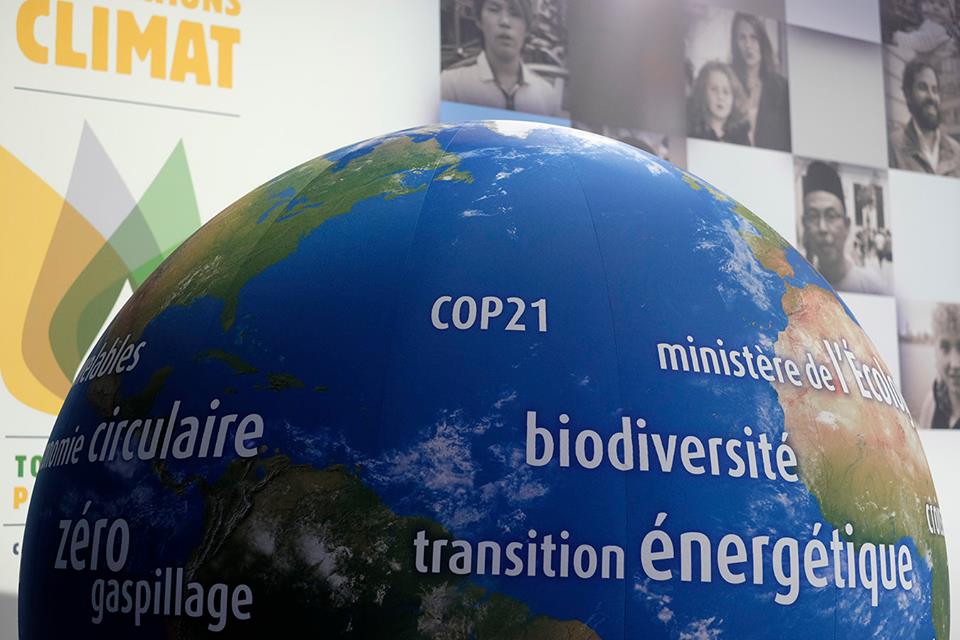India Ratifies the Paris Climate Agreement. This Is What It Means!
India ratified the Paris agreement on climate change on Sunday, marking the occasion of Gandhi Jayanti, which is also the International Day of Non-Violence.

India ratified the Paris agreement on climate change on Sunday, marking the occasion of Gandhi Jayanti, which is also the International Day of Non-Violence. India, which is the world’s fourth-largest carbon emitter accounting for 4.1% of the total global emission, is the 62nd nation to ratify the agreement.
India’s permanent representative to the U.N., Syed Akbaruddin, delivered the ratified agreement to the international body’s office of legal affairs.
The message of Gandhi Ji inspires all of us. India will always work with the world to overcome climate change & create a green planet. https://t.co/IgGDJwPG4m
— Narendra Modi (@narendramodi) October 2, 2016
Nearly 200 countries agreed on the deal in Paris last December at the 21ˢᵗ session of the Conference of the Parties to the United Nations Convention (COP21). It agrees on a long-term goal of keeping the increase in global average temperature to well below 2°C above pre-industrial levels, by bringing down the greenhouse gas emissions. It also aims to limit the increase to 1.5°C, since it would significantly reduce the risks and impacts of climate change.
According to the terms, however, the agreement will not be binding until at least 55 countries accounting for at least an estimated 55% of the total global greenhouse gas emissions ratify it. After India’s ratification, the total emission share of the countries has reached the 51.89% mark. Since European Union, accounting for 12.1% of the total global emission, has also decided to submit its instrument of ratification on Tuesday, the climate deal is all set to enter into force early November. This will be before the commencement of the COP22, which will take place from November 7-18, 2016.
India’s commitment to the agreement:

Source: Facebook
Owing to the agreement, India plans to reduce its carbon emission intensity, i.e. the emission per unit of GDP, by 33-35% from what it was in 2005, by 2030. The aim is to produce 40% of the total electricity from sources other than fossil fuels.
This would mark a significant shift from the coal-based power generation to alternative renewable energy sources. Solar photovoltaic panels, along with large wind mills will contribute to the production of the electricity as per the plan. As much as 100 GW of electricity is to be generated from solar energy, of which 40 GW would be through individual rooftop systems. India also envisages employing other renewable energy sources like biomass energy and hydropower.
India has to increase its forest cover by five million hectares along with an improvement in the quality of green cover of an equal measure to create an additional carbon sink of about 2.5 billion – 3 billion tonnes by 2030.
Big news for the #GlobalGoals!
Ban Ki-moon thanks India for joining the #ParisAgreement on Climate Change. pic.twitter.com/mgg2LVUOnD— United Nations (@UN) October 2, 2016
A carbon sink is a system that is capable of absorbing carbon dioxide (CO2) from the atmosphere. Currently, over 24 per cent of India’s geographical area is under forest and tree cover, which needs to be increased to 33 per cent. While it’s a herculean task and a lot will need to be done to achieve the target, we can say that a beginning has been made. Recently, the government passed the landmark CAMPA (Compensatory Afforestation Fund Management and Planning Authority) bill, which looks to make up for every inch of forest destroyed. Also, the government plans to plant trees along the entire stretch of highways and railways.
India also faces the challenge of rapid development and urbanization. While the process of urbanization is vital to the overall development, India has promised to develop climate resilient urban centres. Along with missions like the development of smart cities and AMRUT (Atal Mission for Rejuvenation and Urban Transformation), there are waste management programmes to be put in place as well. With projects like metro rails and initiatives like the use of CNG-powered as well as electric public transport vehicles in many cities, we can certainly say we’re taking steps towards breathing in cleaner air. The climate change agreement will be instrumental in India’s organised efforts to conserve our environment.
Know more about the Paris Agreement here.
Featured image source: By Vinaykumar8687 (Own work) [CC BY-SA 4.0], via Wikimedia Commons
– Aditi Patwardhan
Like this story? Or have something to share? Write to us: [email protected], or connect with us on Facebook and Twitter.
NEW: Click here to get positive news on WhatsApp!
If you found our stories insightful, informative, or even just enjoyable, we invite you to consider making a voluntary payment to support the work we do at The Better India. Your contribution helps us continue producing quality content that educates, inspires, and drives positive change.
Choose one of the payment options below for your contribution-
By paying for the stories you value, you directly contribute to sustaining our efforts focused on making a difference in the world. Together, let’s ensure that impactful stories continue to be told and shared, enriching lives and communities alike.
Thank you for your support. Here are some frequently asked questions you might find helpful to know why you are contributing?


This story made me
-
97
-
121
-
89
-
167











